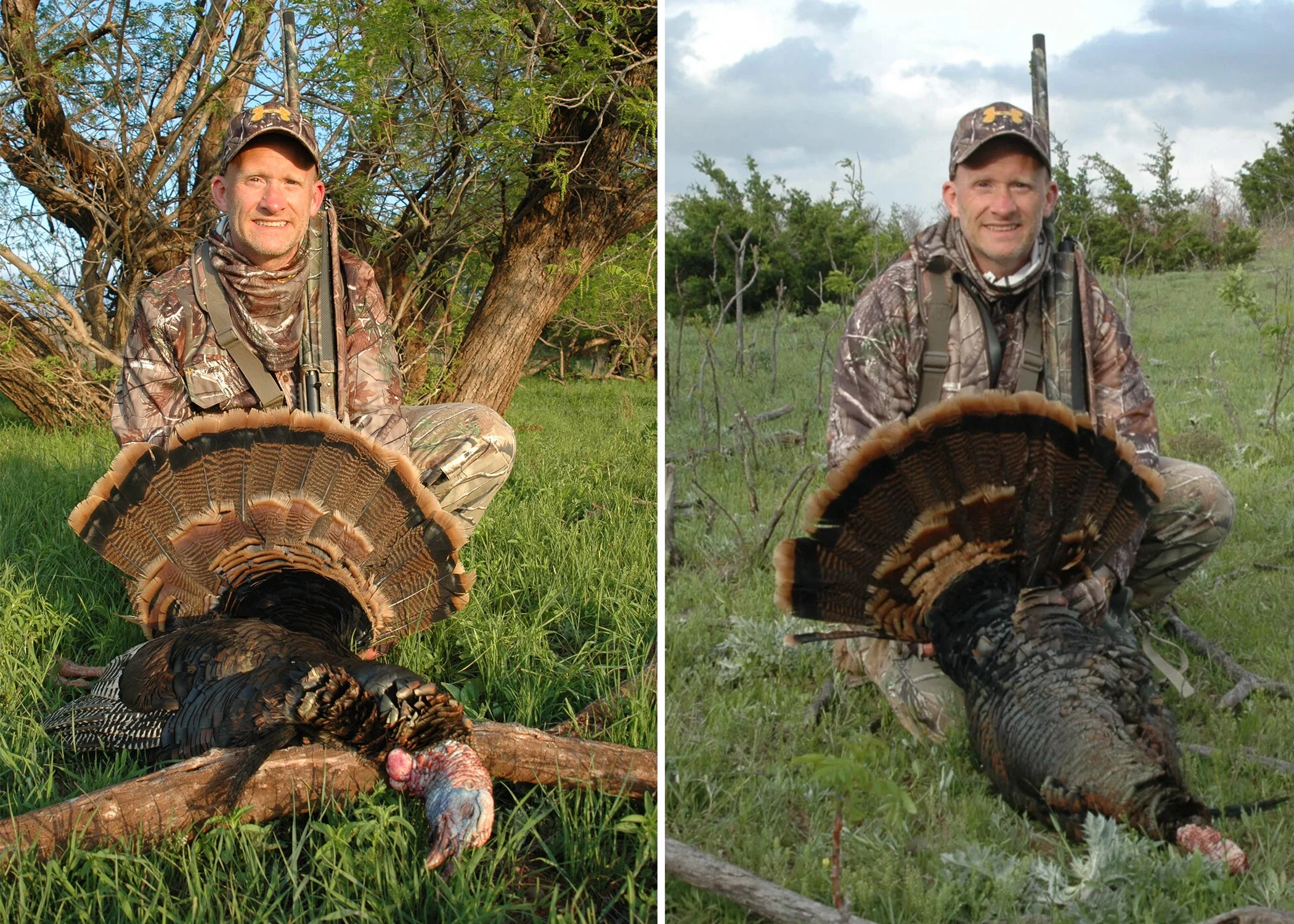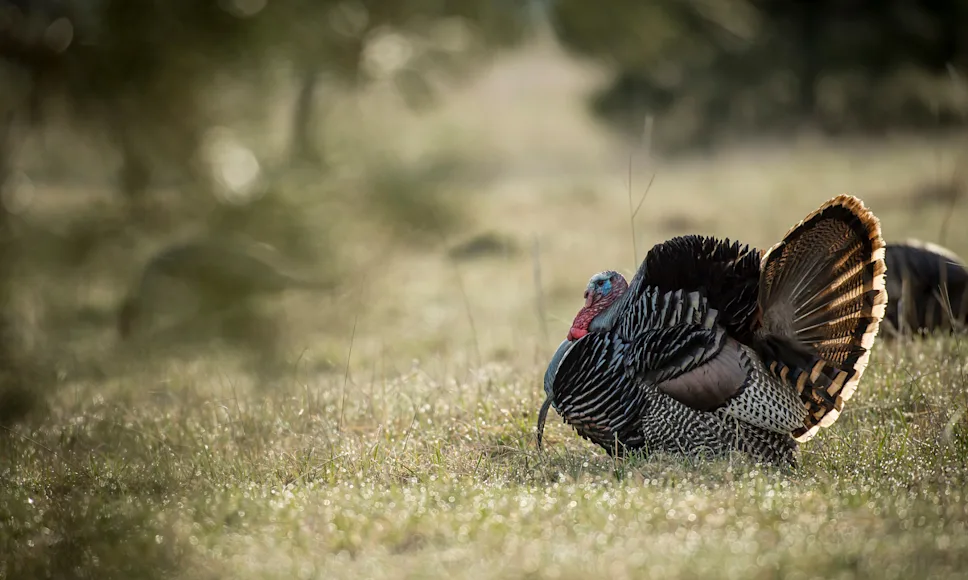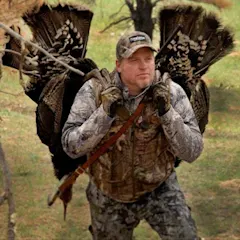For those of us lucky enough to still be chasing gobblers, which includes hunters in most of the northern half of the country, we are now firmly in the late season. The bad news is that we only have a handful of days left and what gobblers are still on the landscape have seen weeks of pressure. The good news is that those same birds are finding themselves increasingly lonely, as hens focus on nesting.
In my neck of the woods in upstate New York, the gobbling has been very good, both on the roost and into mid- and late morning. And whereas a week ago, when it seemed like toms were still in the "you have to come to me" mode, they seem to be actively seeking hens through much of the day. So, in this final installment of our 2025 Strut Reporters coverage, let's take a look at this late-season phase and how to take advantage of what's going on to fill that final tag.
Strut Phase: Late Season

As the hunting season draws to a close, the vast majority of breeding activity is typically finished. Again, there are exceptions to this, such as when a large weather event has destroyed the first attempt at nesting by area hens and they seek out gobblers for a second try. But in most years, hens are spending the majority of their time on nests, and gobblers and jakes may even begin to form the small bachelor flocks they'll stay in through summer. That said, a gobbler is always eager to breed, and if he hears a receptive hen, he can be highly vulnerable to calling. The weather can be warm, the bugs might be out, and trees and shrubs are leafing out, but this can still be a prime time to tag a tom.
How to Hunt to Final Days of the Season
Hunting late-season turkeys is a balancing act. On one hand, there are lonely gobblers out there; on the other, they're apt to be a little shy and spooky. So, yes, you can call them in now, but less calling is usually more. You can move on them, too, given all the foliage, but you still need to be extra careful. And while decoying can work, it can also send a tom packing.
That said, let's start with the roost hunt. Putting a tom to bed and slipping in close well before shooting light is never a bad idea. If you hunt open ground, you can sometimes watch a lone tom waddle to his roosting area in the evening and fly up all by himself this time of year. I did that just last week, and the bird came right to me in the morning. But even if your tom does have hens at flydown, there's a decent chance he won't have them for long. With a little patience, you can get him to break off and come to you.

If the dawn hunt doesn't pan out, mid- and late mornings can be electric now when it comes to striking and working eager gobblers. So skip the diner for breakfast, wolf down some jerky, and keep at it. Call hard and loud if you need to (and only if you need to) to to strike a bird, but then tone it down once you get set up. Clucking, purring, and leaf-scratching go a long way now, and if you feel you have to yelp, short strings of soft yelps are usually best. Keep in mind too that when trying to striking a tom, hard-hunted birds that won't answer a box call might jump all over a crow call or other locator. You can often keep a tom gobbling with a crow call until you figure out exactly where you need to set up to call him in.
Fanning and reaping are increasingly low-odds propositions as the late season gets later. If you find a tom with company that's all blown up and gobbling hard, he might be in the mood. But any bird whose temperature is less than hot will likely just slink away. I'm not saying these tactics can't work, but thinking of them more as last-resort moves is probably best now. Even in your static decoy setups, a smaller-sized half- or quarter-strut jake is a safer better bet now than any full-strut jake or gobbler decoy. And the safest bet is a lone hen.
Of course, if you are hunting the woods, you don't need a decoy at all—and this is one of the best times to hunt the woods. Strike a gobbler and use the heavy foliage to sneak close-ish; then set up on the back side of a hill, call softy, and wait for that red head to come bobbing over the rise.
5 Experts Tips for Hunting Late-Season Turkeys
1. Brian Lovett, Upper Midwest

This period can be glorious or really tough. It's the best time to catch an old gobbler actively searching for hens, but some birds are still solidly henned-up, too. Roost gobbling can vary from tepid to savage. During this time, I've had birds gobble at my calling at ridiculously long distances and then run me over on approach. Conversely, I've had them absolutely clam up and slick back their feathers at my first yelp, too. Oh, and some gobblers begin to flock back up in bachelor groups during this time, so don't be afraid to gobbler-yelp, jake-yelp or gobble at them.
2. Will Brantley, Mid-South
Hit the road and head north. I love hunting prairie and mountain turkeys during the final days of May.
3. Jace Bauserman, Rocky Mountain West
Burn the boot leather during the late season. Two years ago, my son and I killed two toms at 10,200 feet. We found a boy band using a meadow filled with small grasshoppers. We didn't see a single hen, but the boys were still strutting and gobbling their heads off. We set out a single hen decoy and called nine Merriam gobblers into range.
4. Scott Haugen, Northwest

The last two or three weeks of the season is when I look for new toms to move in to an area. I scout and run a lot of trail cameras to learn what’s happening in the turkey woods. As soon as a new tom shows up, I get after it. These lone toms can be timid, often showing up because they’ve been displaced by other, more aggressive bachelor toms later in the season. Light hen yelps on box, pot, and diaphragm calls often pull in a wary tom. Mixing up calls is key, until you find what a tom likes. A lot of times they come in silent, so be ready. That said, if a late-season tom gobbles hard at my calls, I'll get aggressive. Strike while it’s hot. The goal is to get the tom to commit fast.
5. Steven Stoltz, Midwest
Late morning and afternoons can be deadly during this period. Pay attention to where hens are feeding and hanging, as well as to favored strut zones. These area's are where gobblers will go when searching for a hen. Also, be mindful that many birds have been called to throughout the spring. Softer calling usually works much better on later season birds. Also remember that with the heavier foliage, birds will sound much further than they really are. If you can hear them good, your probably close enough to set up and work him.


